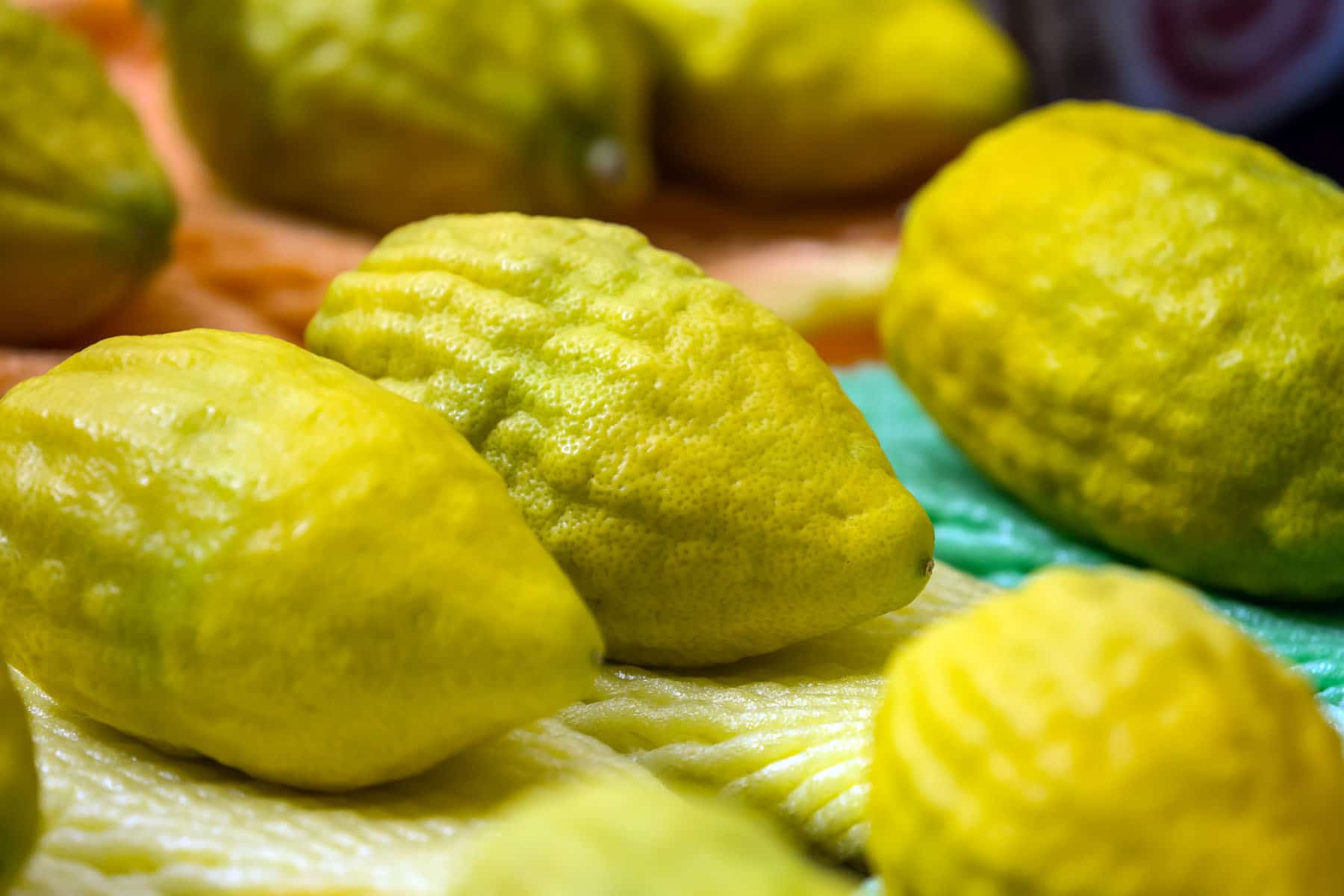
This weekend marks the beginning of the Jewish festival of Sukkot, a joyous time. The holiday commemorates the protection that God provided the Children of Israel in the desert when they left Egypt. Sukkot is also the celebration of the fall harvest.
One of the many visual symbols of the Sukkot festival is the etrog. It is ceremonially waved along with the lulav (palm frond), myrtle twigs and willow twigs. The Torah source for the etrog is the line in Vayikra, “on the first day, you shall take the fruit of majestic trees” (p’ri etz hadar).
Far from merely being a fragrant, ornamental lemon to be cradled during the Hallel service, the etrog has a colorful, secret history that is as fascinating as its aroma is intoxicating.
The etrog is clearly a strange-looking fruit. It resembles a bumpy lemon. Some have a ridged waistline (known as a gartel). Others have a pitom (botanically, the style and stigma of the flower) sticking out of the top.
Etrogs mostly consist of a thick rind with aromatic skin, almost no pulp and lots of seeds. In ancient cultures, those seeds symbolized fertility. The ancients also prized these fruits for their rind: It can be candied; the oil turned into fragrance; and the rind used for medicinal purposes. It predates the lemon by thousands of years and is one of four ancestral citrus fruits together with the pomelo, mandarin and papeda, through which nearly all modern citrus fruits derive. (The lemon is a hybrid of the citron, pomelo and mandarin.)
The etrog originated in the southwestern Chinese province of Yunnan. It then traveled to northeastern India, where it became incorporated into Ayurvedic medicine. Alexander the Great then spread it to the Persian Empire and the Mediterranean region.
The most commonly used etrog variety comes from the Calabria region of Italy. Along with Israel and Morocco, Calabria is one of the three major exporters of etrogs. In order to remain kosher for the holiday, etrogs grown for Sukkot cannot be grafted onto other hardier citrus trees. Unlike almost every other fruit in the world, this halachic preference for purity means that there has been very little cross-breeding for at least 1,000 years, so the etrog of today may truly be an ancient fruit, a physical link to our past.
Unlike almost every other fruit in the world, this halachic preference for purity means that there has been very little cross-breeding for at least 1,000 years.
After the holiday, many people have a custom of eating their etrog or turning it into liquor. However, an etrog that is optimally cultivated for religious observance may not necessarily be desirable for eating or pickling, turning into liquor or making into marmalade.
The etrog is not grown as an edible crop. It is grown to be ornamental. The etrog crop is very fragile, highly vulnerable to infestation by insects and prone to bruises, blemishes and broken pitoms. In order to be kosher for ceremonial use on Sukkot, the crop must be protected with copious amounts of pesticides. Furthermore, for the pitom to remain intact, a growth hormone is applied.
What, then, to do with your etrog post-holiday?
- Make citron oil to use as a bath or air freshener: Grate the etrog zest, add to a glass bottle and combine with almond oil. Freshen up the bathwater with a few drops or spray it in the air at home.
- Use as spices for Havdalah: Poke holes in the etrog and fill the holes with cloves.
- Grow a tree with the seeds.
On Sukkot, we are commanded to be happy. How fortunate are we to be holding a fruit that is not only little changed from the etrogs that our ancestors held but is also one of Earth’s primeval citrus fruits.
Michael Tanenbaum is a writer and marketer living in Los Angeles. He is the founder and editor-in-chief of ConsciouslyKosher.





















 More news and opinions than at a Shabbat dinner, right in your inbox.
More news and opinions than at a Shabbat dinner, right in your inbox.